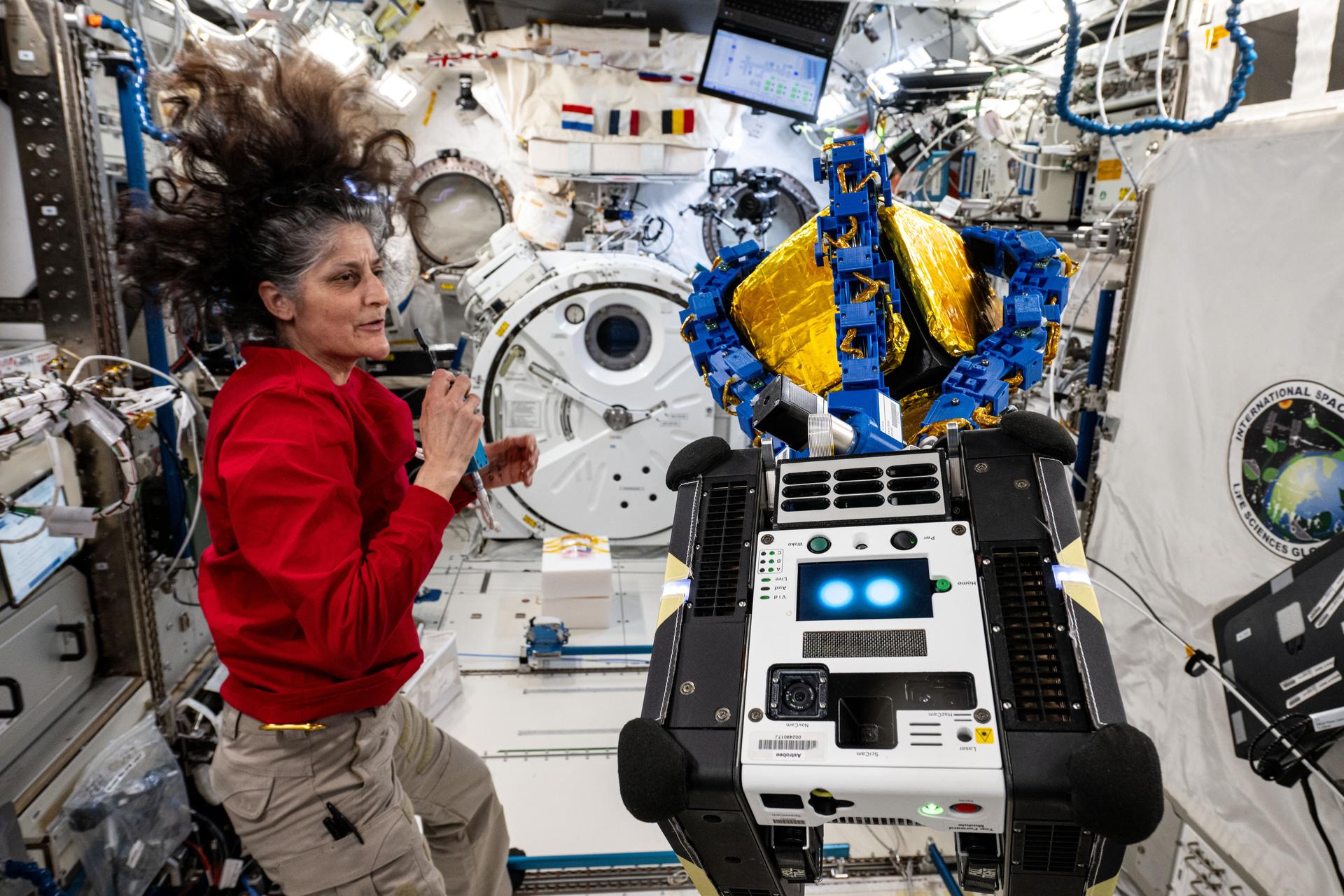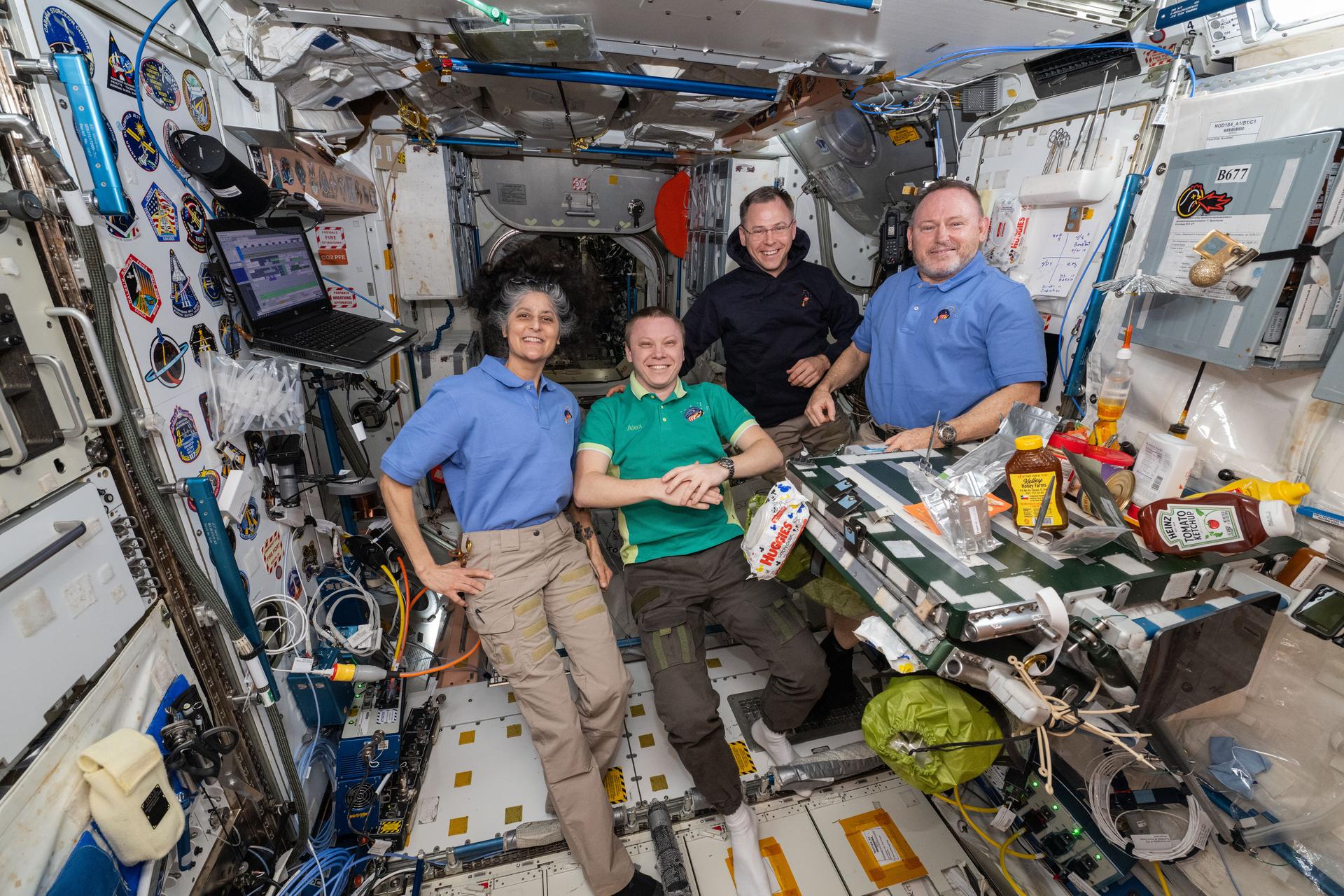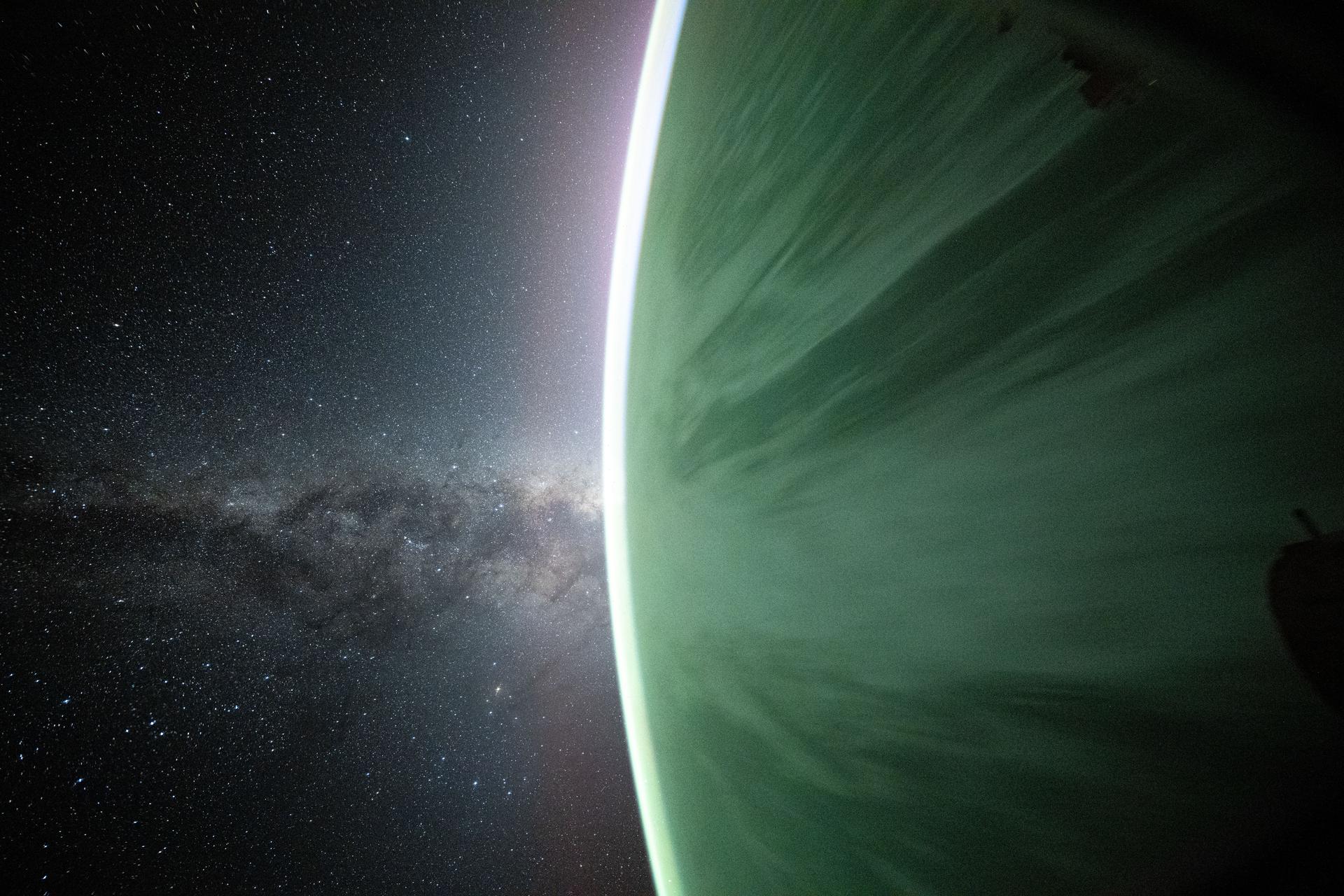Free Flying Robotics, Space Agriculture Ahead of Cargo Mission Swap
Free flying robotics and space agriculture topped Tuesday’s research schedule as the Expedition 72 crew helps advance the space industry. The International Space Station will also see the departure of a cargo craft and the arrival of its replacement this week.
NASA’s station Commander Suni Williams began her day setting up and activating the Astrobee robotic assistant, a cube-shaped, toaster-sized technology demonstration device, inside the Kibo laboratory module. Next, she outfitted the Astrobee with tentacle-like grippers for a test of its ability to autonomously detect and capture simulated orbital debris. Afterward, ground controllers took control of Astrobee and programmed the robotic free flyer to perform maneuvers to locate a capture target then reach out and grapple the free-floating object. Researchers are testing the ability of robots to safely remove orbital debris and protect satellites.
Following the robotics demonstration, NASA Flight Engineer Don Pettit worked in Kibo installing research components on the Advanced Plant Habitat hosting growing Red Romaine lettuce. The space botany hardware divided the young plants into quadrants for observation and provided a temperature sensor device measuring leaf temperature between watering periods. Insights from the Plant Habitat-07 investigation may inform ways to grow crops on future space missions.
NASA astronauts Nick Hague and Butch Wilmore spent their day primarily focusing on science hardware, life support maintenance, and cargo transfers. Hague started his shift in the Columbus laboratory module partially uninstalling the Navigation and Communication Testbed that could provide a more accurate alternative to satellite systems for lunar navigation. Hague then powered up a pair of incubators for biology research later in the week. Wilmore began his day draining recycling tanks then loaded trash inside the Cygnus space freighter ahead of its departure next month. Wilmore wrapped up his shift installing software on a science laptop computer in the Destiny laboratory module.
Roscosmos’ Progress 89 cargo craft is poised to depart the space station at 3:17 p.m. EST today when it undocks from the Zvezda service module’s aft port completing a six-month cargo mission. It will be replaced by the Progress 91 cargo craft after it launches at 4:24 p.m. on Thursday from the Baikonur Cosmodrome in Kazakhstan. The Progress 91, carrying three tons of food, fuel, and supplies, will dock to Zvezda’s vacant port at 6:03 p.m. on Saturday where it will stay for another six months.
Cosmonauts Alexey Ovchinin and Ivan Vagner prepared on Tuesday for the Progress 91’s arrival setting up the TORU, or tele-robotically operated rendezvous unit, inside Zvezda. The TORU can be used to command and control an approaching spacecraft from Roscosmos if necessary.
Vagner then moved on and scanned cosmonaut Aleksandr Gorbunov’s eyes with the Ultrasound 2 device for a regularly schedule exam. Gorbunov also completed a 24-hour session that measured his cardiac activity and blood pressure with portable electrodes.
Learn more about station activities by following the space station blog, @space_station and @ISS_Research on X, as well as the ISS Facebook and ISS Instagram accounts.
Get the latest from NASA delivered every week. Subscribe here: https://www.nasa.gov/subscribe
Powered by WPeMatico
Mark A. Garcia








